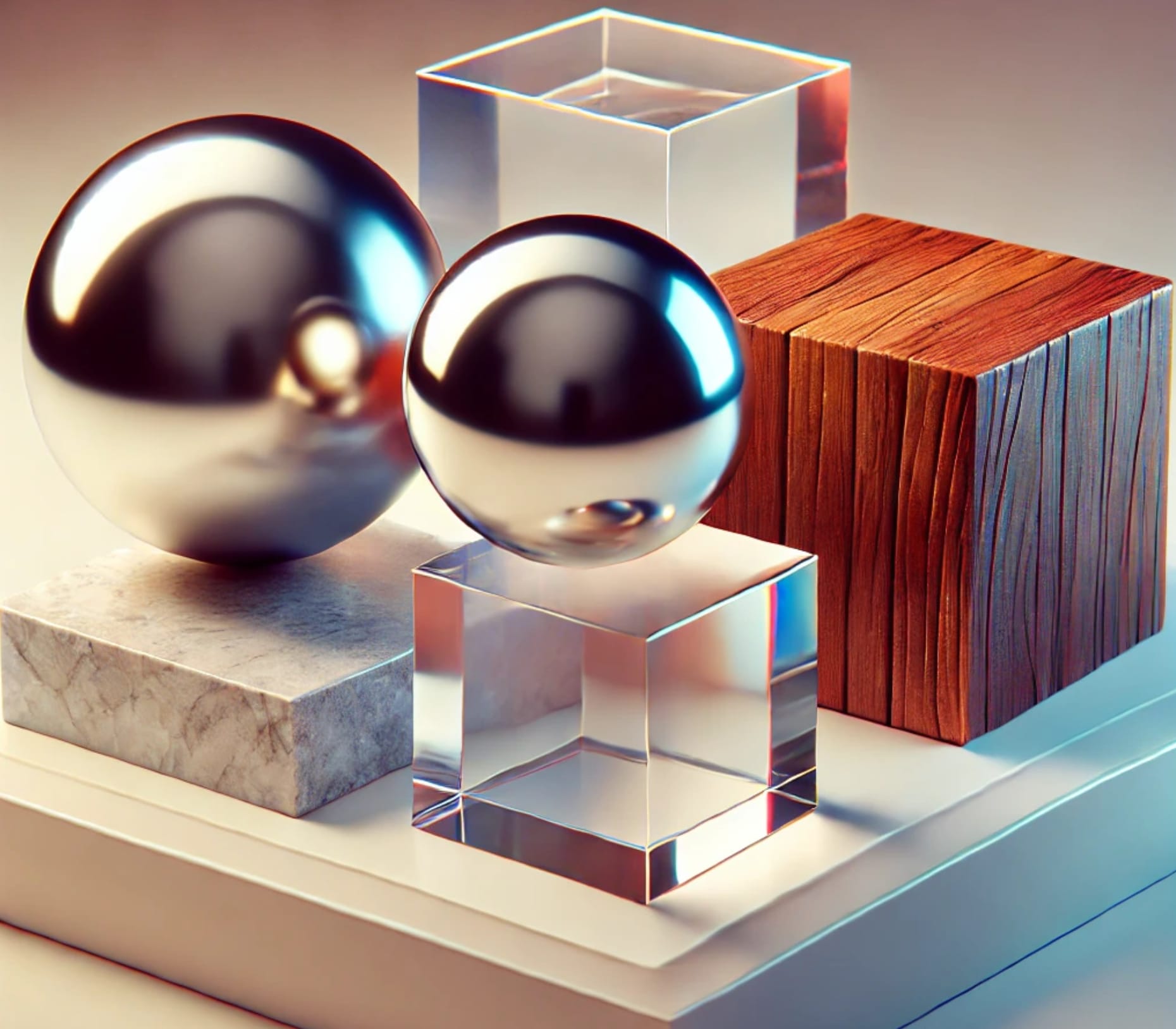
Materials in Blender
Materials in Blender are essential for adding color, texture, and realism to 3D models. Materials define how objects appear.
Blender’s Material System
Before diving in, it’s helpful to understand how materials work in Blender:
- Materials Tab: Found in the Properties Panel, this tab allows you to create and manage materials for selected objects.
- Shaders: Materials in Blender are defined by shaders, which determine how light interacts with the surface.
Creating a Basic Material
- Select Your Object:
- In the 3D Viewport, click on the object to which you want to apply a material.
- Open the Material Tab:
- Go to the Properties Panel and click the Material Tab (red sphere icon).
- Add a New Material:
- Click New to create a new material. This creates a default material with a Principled BSDF Shader.
What is a Principled BSDF Shader?
The Principled BSDF Shader simplifies the process of creating realistic materials in Blender. It’s like a universal material template that combines many features into one node.
- Principled: It follows rules (principles) from real-world physics, making it easier to create realistic materials.
- BSDF: Stands for Bidirectional Scattering Distribution Function, which describes how light bounces off or goes through a surface.
Why Use the Principled BSDF Shader?
Instead of combining lots of separate nodes (like Diffuse, Glossy, and others), the Principled BSDF Shader lets you adjust everything in one place with a few sliders and settings. For example:
- Base Color: Sets the main color of the material.
- Metallic: Adjusts how metallic the material appears.
- Roughness: Controls how shiny or matte the surface is.
- Specular: Adjusts the brightness of light reflections.
- Transmission: Makes the material transparent, like glass.
Experiment with these sliders to see how they affect the material.